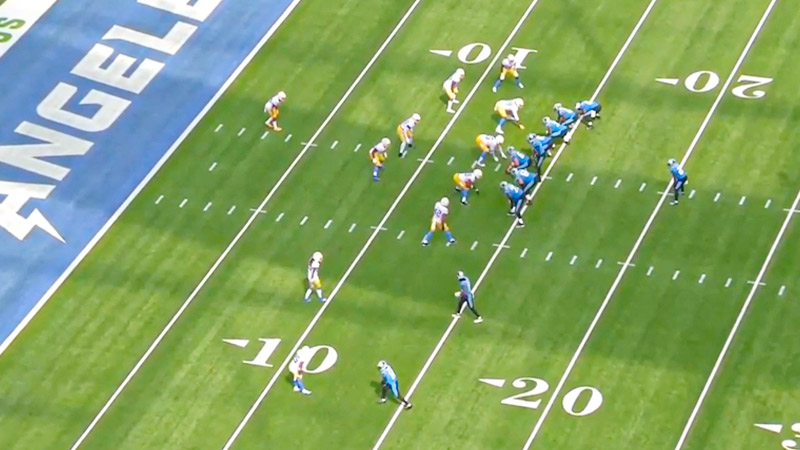In the dynamic world of American football, strategies and tactics are ever-evolving, and one approach that has transformed the game is the Football Spread Offense.
This offensive scheme, characterized by its innovative use of formations, emphasis on space, and quick-paced play, has reshaped how teams approach the game.
In this comprehensive guide, we delve into the intricacies of the Football Spread Offense, answering frequently asked questions and shedding light on its significance, advantages, disadvantages, and more. Stay focused.
What Is a Football Spread Offense?
The football spread offense is a strategic offensive scheme employed in gridiron football, designed to create advantageous opportunities for the offensive team.
This system is characterized by its distinct approach to formation, with a primary focus on maximizing space on the field and exploiting defensive weaknesses.
Central to the spread offense is the positioning of the quarterback in the shotgun formation, where the quarterback lines up a few yards behind the line of scrimmage, often alongside a running back.
This setup allows the quarterback a clearer view of the field and provides more time to read the defense before making decisions. The hallmark of the spread offense is its emphasis on “spreading” the defense horizontally.
This means deploying multiple wide receivers, typically three, four, or even five, across the width of the field. The intention is to force the defense to cover a larger area, creating mismatches and openings that the offense can exploit.
Roles of the Players in Football Spread Offense
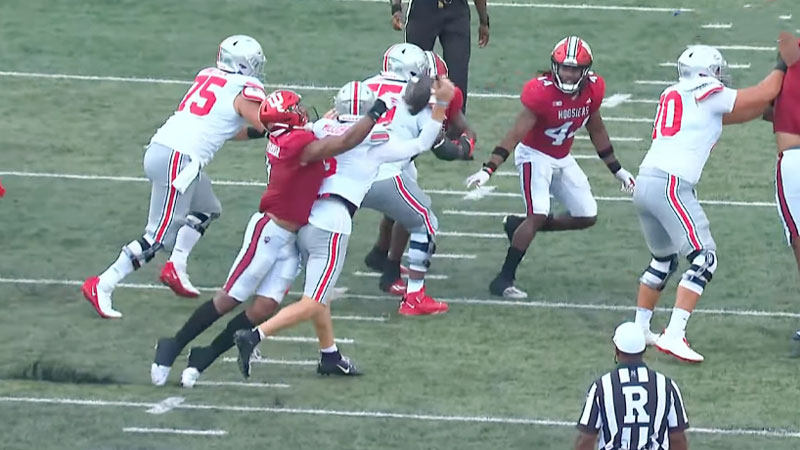
In a football spread offense, each player has specific roles and responsibilities that contribute to the success of the offensive scheme. Here’s an overview of the key player roles in a typical spread offense:
Quarterback (QB)
The quarterback is the leader of the offense in a spread system. They are responsible for reading the defense, making pre-snap adjustments, and distributing the ball to various receivers.
The quarterback’s accuracy, decision-making, and ability to quickly identify defensive coverages are crucial in this offense. They also need to be mobile enough to evade pressure and potentially contribute to the running game through designed quarterback runs or options.
Wide Receivers (WR)
Wide receivers are a central component of the spread offense, as they are often spread out across the field to create mismatches and exploit open spaces. They must be quick, agile, and possess good route-running skills to get separation from defenders.
Wide receivers are primary targets for quick passes, screenplays, and deep routes. They are responsible for making precise cuts, catching the ball, and gaining yards after the catch.
Slot Receivers
These are receivers who line up in the slot, which is the area between the offensive line and the outermost receiver. Slot receivers often have a unique skill set, blending the speed and route-running ability of wide receivers with the physicality and agility to work in tight spaces.
They are often used for short to intermediate routes and can exploit matchups against linebackers or safeties.
Running Backs (RB)
Running backs in a spread offense may have dual roles – carrying the ball on rushing plays and catching passes out of the backfield. They can line up beside the quarterback or move into motion to create mismatches with linebackers or safeties.
Running backs need to be versatile, capable of running inside or bouncing outside, and catching passes effectively. They can also be utilized in screen passes or as outlets for the quarterback under pressure.
Tight Ends (TE)
In some spread offenses, tight ends are still present, although their roles may vary. They could be utilized as blocking assets for both run and pass plays, as well as occasional pass-catching threats.
Depending on the offensive scheme, tight ends might be asked to line up in multiple positions, from the line of scrimmage to the slot, or even split out wide.
Offensive Line (OL)
The offensive line plays a crucial role in protecting the quarterback and creating running lanes for the running backs. In a spread offense, they need to be agile and quick off the snap to execute various blocking schemes, including zone blocking.
Good communication and coordination among the offensive linemen are essential to maintaining a clean pocket for the quarterback and giving running backs space to maneuver.
Fullbacks (FB)
While less common in spread offenses, fullbacks might still find roles in short-yardage situations or as lead blockers in specific rushing plays. Their roles could involve pass protection or acting as outlets for short passes in the flat.
When to Use Football Spread Offense?
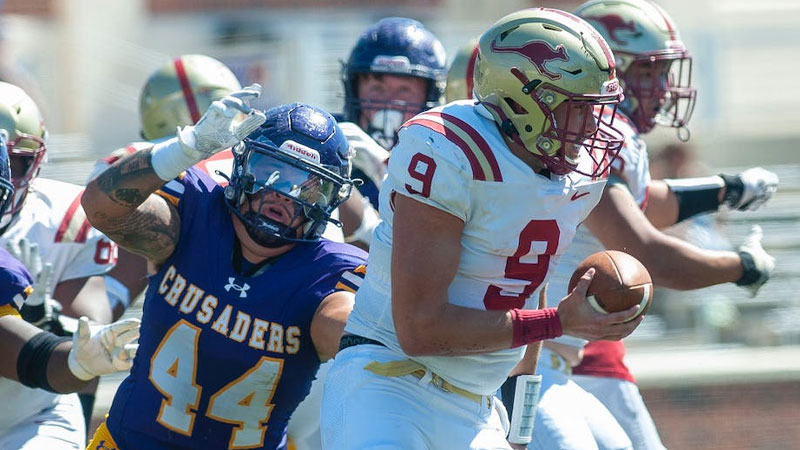
The football spread offense can be effective in a variety of situations, but its success depends on understanding when and how to use it strategically. Here are some situations in which using a spread offense might be advantageous:
Exploiting Mismatched Defenses
If the opposing defense has weaknesses in their pass coverage or struggles to defend against a certain type of receiver, a spread offense can exploit these matchups by spreading the field and isolating those weaknesses.
Quick Scoring Opportunities
When a team is behind on the scoreboard and needs to quickly score points, the spread offense can be effective due to its ability to move the ball downfield rapidly. By utilizing quick passes and spreading out the defense, the offense can create opportunities for big gains and quick scores.
Utilizing a Skilled Quarterback
If a team has a talented and agile quarterback who excels at reading defenses, making quick decisions, and accurately delivering the ball to various receivers, a spread offense can highlight these strengths and put the quarterback in a position to succeed.
Overcoming a Strong Defensive Front
Against a tough defensive line that excels at stopping the run, a spread offense can be used to open up running lanes by spreading out defenders and reducing congestion in the box. This approach can create opportunities for running backs to find gaps and make explosive plays.
Capitalizing on Speed and Agility
If a team has speedy and agile receivers and running backs, the spread offense can exploit their abilities to create separation, break tackles, and generate yards after the catch. This can be particularly effective against slower or less athletic defensive players.
Changing the Tempo
The spread offense allows for a quick-paced style of play, which can catch the opposing defense off-guard and prevent them from making timely substitutions or adjustments. This can be used strategically to control the tempo of the game and keep the defense on its heels.
Creating Versatility
The spread offense’s ability to seamlessly transition from passing to running plays and vice versa makes it a versatile option. This flexibility can keep the defense guessing and prevent them from effectively predicting the offense’s next move.
Managing Limited Offensive Line Strength
If a team has an offensive line that might struggle against powerful defensive fronts, the spread offense’s quick passing and emphasis on spacing can help mitigate the impact of a weaker offensive line.
Significance in Football Spread Offense
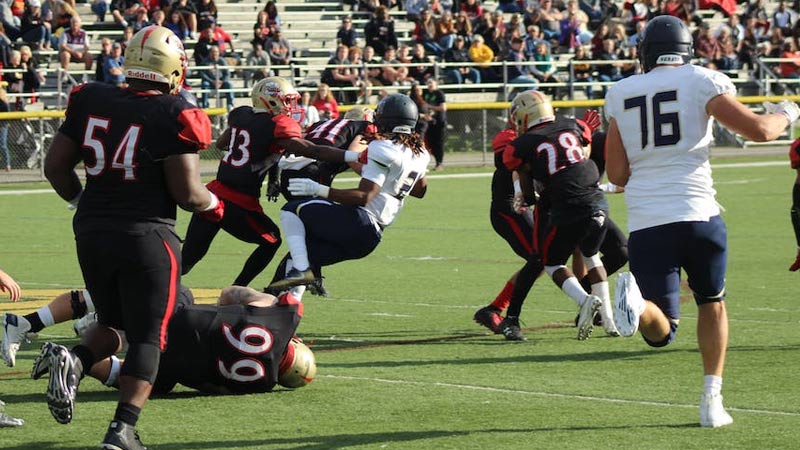
The football spread offense holds significant importance in modern football due to its potential to revolutionize offensive strategies, create mismatches, and maximize offensive output. Here are some key aspects highlighting its significance:
Strategic Evolution
The spread offense represents a departure from traditional offensive formations and strategies. Its emphasis on spreading the field horizontally challenges defenses to adapt to a new style of play, forcing them to defend against a wide array of passing and running options.
Exploiting Mismatches
By deploying multiple receivers and spreading the defense thin, the spread offense can create mismatches that favor the offense. This can lead to favorable one-on-one matchups for receivers against defenders who may struggle to keep up, resulting in big plays and increased scoring opportunities.
Adapting to Defensive Schemes
The spread offense is designed to counteract defensive strategies by putting pressure on defenses to cover a larger portion of the field. This adaptability can disrupt conventional defensive tactics, allowing offenses to dictate the tempo and flow of the game.
Maximizing Skill Sets
The spread offense capitalizes on the strengths of skilled players, such as agile quarterbacks, speedy receivers, and versatile running backs. This approach enables coaches to tailor the offense to the capabilities of their roster, making the most of their players’ talents.
Quick-Paced Play
The fast-paced nature of the spread offense can catch defenses off-guard and limit their ability to make substitutions or adjustments. This can lead to defensive breakdowns and open up opportunities for offensive gains.
Balancing Pass and Run
The spread offense can seamlessly transition between passing and running plays, keeping the defense uncertain about the next move. This balance can prevent defenses from keying in on a single aspect of the offense, making it challenging to defend against.
Development of Versatile Quarterbacks
The spread offense demands quarterbacks who can make quick decisions, read defenses effectively, and accurately distribute the ball to multiple targets. This has led to the development of quarterbacks who possess a wide skill set, both as passers and runners.
Enhanced Entertainment
The spread offense’s emphasis on big plays and high-scoring games can make football more exciting for fans. Its potential for explosive plays and rapid changes in momentum contribute to a more engaging spectator experience.
Advantages of Football Spread Offense
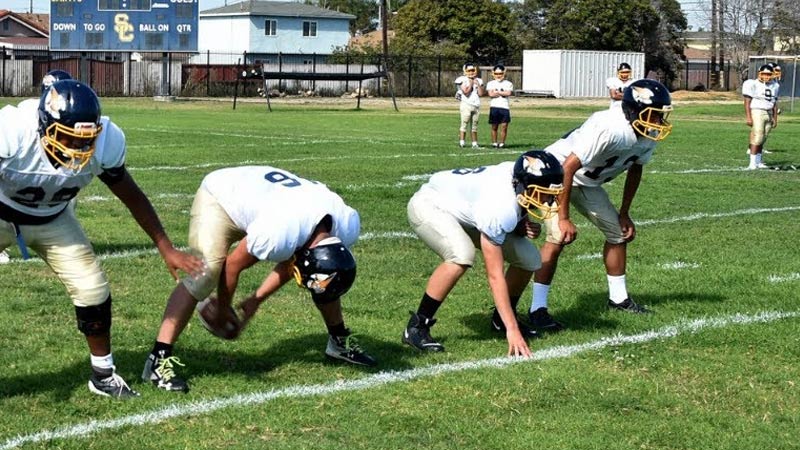
The football spread offense offers a range of advantages that make it a popular and effective strategy in the game. Here are some key advantages:
Exploiting Space
By spreading out the field horizontally with multiple receivers, the spread offense creates more open space for both passing and running plays. This can lead to better opportunities for big gains and yards after the catch.
Creating Mismatches
The use of multiple receivers can force the defense to spread their coverage thin, leading to one-on-one matchups that favor the offense. Skilled receivers can exploit these mismatches to gain separation and make plays.
Quick Passes
The spread offense often employs quick, short passes that allow the quarterback to get the ball out of their hands rapidly. This minimizes the time the offensive line needs to protect the quarterback and keeps the defense off balance.
Read-Option Plays
The spread offense can incorporate read-option plays, where the quarterback reads a specific defensive player and decides whether to hand off the ball to a running back or keep it themselves. This adds an element of unpredictability to the offense.
Versatility
The spread offense can be adapted to suit the strengths of the players on the roster. It allows coaches to showcase the talents of their quarterback, receivers and running backs in ways that maximize their potential.
Balanced Attack
The spread offense can effectively balance both the passing and running aspects of the game. Defenses are forced to respect both dimensions, making it difficult to focus solely on stopping one aspect of the offense.
High-Scoring Potential
The spread offense’s ability to create big plays and generate quick scores contributes to high-scoring games, which can be exciting for fans and create an engaging viewing experience.
Tempo Control
The spread offense can operate at a fast pace, running plays quickly and preventing the defense from making timely substitutions or adjustments. It gives the offense control over the tempo of the game.
Utilizing Quarterback Mobility
If the quarterback is agile and mobile, the spread offense can incorporate designed quarterback runs and options, adding an extra dimension to the running game.
Player Development
The spread offense encourages the development of versatile players who can excel in various roles. Quarterbacks are required to make quick decisions, receivers refine their route-running, and running backs become adept at catching passes.
Disadvantages of Football Spread Offense
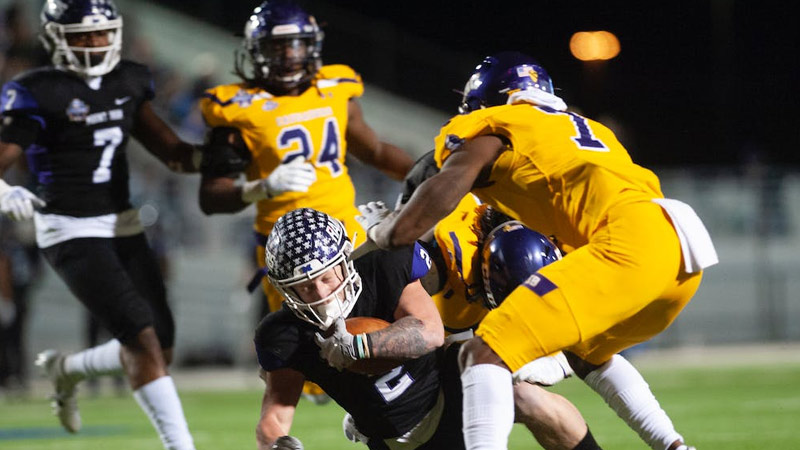
While the football spread offense offers many advantages, it also comes with certain disadvantages and challenges. Here are some potential drawbacks of using the spread offense:
Vulnerability to Pressure
The spread offense often relies on quick passes, which can leave the quarterback vulnerable to pressure from the defense. If the offensive line struggles to protect the quarterback, it can result in sacks, turnovers, and negative plays.
Limited Time of Possession
The fast-paced nature of the spread offense can lead to quick drives and possessions, which may result in a shorter time of possession for the offense. This could potentially strain the defense by giving them less time to rest between series.
Inconsistent Running Game
While the spread offense can incorporate running plays, its focus on spreading out defenders can sometimes result in a less effective running game, especially in short-yardage situations where a power running formation might be more suitable.
Risk of Injuries
The emphasis on quick and aggressive play can increase the risk of injuries for players, especially for those in contact positions such as wide receivers and running backs who are exposed to hits and tackles.
Predictability
Overreliance on certain formations and plays in the spread offense can make the offense predictable to defenses, allowing them to anticipate plays and make adjustments more effectively.
Weather Impact
Adverse weather conditions, such as heavy rain or strong winds, can negatively impact the passing game in a spread offense, potentially leading to incomplete passes, turnovers, and a less effective offense overall.
Defensive Adjustments
Experienced defensive coordinators may develop strategies to counter the spread offense’s tactics, which can neutralize its advantages and force the offense to adapt or struggle to move the ball effectively.
Dependency on Quarterback Skill
The success of the spread offense is often closely tied to the skill level of the quarterback. If the quarterback lacks the ability to read defenses quickly and accurately, the offense can become less effective.
Lack of Physicality
The spread offense’s emphasis on finesse and speed might not fare well against more physical and aggressive defenses that can disrupt timing and create disruptions in the passing game.
FAQs
What exactly is the Football Spread Offense?
The Football Spread Offense is a strategic offensive scheme that spreads out the field horizontally, utilizing multiple receivers and often placing the quarterback in the shotgun formation.
This dynamic approach aims to create mismatches, exploit defensive weaknesses, and maximize offensive production through both passing and running plays.
How does the spread offense create mismatches?
By deploying multiple receivers across the width of the field, the spread offense forces the defense to cover a larger area.
This can lead to one-on-one matchups between skilled receivers and defenders who may struggle to keep up, creating opportunities for big gains and explosive plays.
What are the advantages of using the spread offense?
The spread offense offers several advantages, including the ability to exploit space, create mismatches, execute quick passes, maintain a balanced attack, and control the tempo of the game. Its versatility allows teams to adapt to their players’ strengths, leading to high-scoring and dynamic gameplay.
Are there any drawbacks to employing the spread offense?
While effective, the spread offense is not without its challenges. Vulnerability to pressure on the quarterback, potential predictability, inconsistency in the running game, and a dependency on quarterback skill are some of the disadvantages that teams must consider.
When is the best time to use the football spread offense?
The spread offense can be advantageous when seeking to exploit mismatched defenses, quick scoring opportunities, utilizing a skilled quarterback, overcoming strong defensive fronts, capitalizing on speed and agility, and changing the tempo of the game.
However, its strategic use depends on the team’s strengths, the opponent’s weaknesses, and the game situation.
Wrapping Up
The Football Spread Offense has become a cornerstone of modern football, reshaping offensive strategies and enhancing the entertainment value for fans. Its ability to create mismatches, balance passing and running plays, and exploit space has elevated the game to new heights.
However, teams must also be aware of the potential challenges associated with the spread offense and use it judiciously to harness its full potential.
As the football landscape continues to evolve, the spread offense remains a key player in shaping the future of the sport. Thank you for your support.

